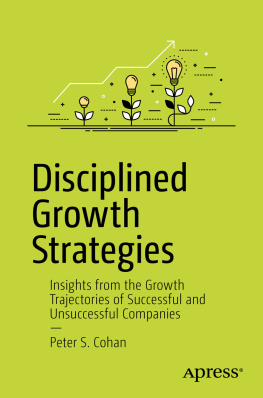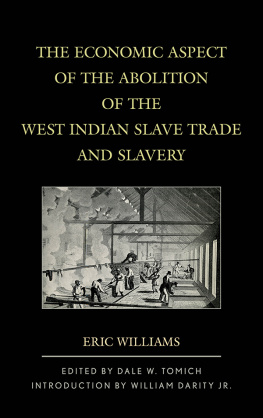CONTENTS
This book is dedicated with love to
Mom and Dad,
my history
To Rebecca,
in dynamic alignment
And to Benjamin and Stephanie,
our renewal
PREFACE
T his book is about crafting strategy in the new economy. There are new business creatures that behave differently from what our experience has prepared us for. Yet there are older business creatures that have changed relatively little. This work explains how these new creatures are evolving alongside their traditional counterparts. This book is for you if you want to understand whether your business model is changing.
Markets have become unpredictable. The rapid pace of technologies, deregulation, and globalization is changing the business landscape. Airlines, telecommunications, computers, entertainment, health care, industries that have grown up with the information age, are encouraging managers to redefine markets and their responsibilities. Still, other markets remain less touched by change, with companies operating along more or less traditional lines.
How do you know where you belong? Or where you are heading?
This study is based on renewal patterns observed in forty-five industries. This book describes how companies succeed and fail, differently, in different markets. The study, grounded at the business unit level, spans manufacturing, service, high technology, and property-rights industries, and extends across the spectrum of business competition. We obtained evidence by examining companies for similarities and differences in patterns of growth, decline, and rebirth. The effort was guided by economic and organizational theory. Our findings were supplemented by discussions with managers and industry analysts.
Our work showed that managers can strategize renewal in terms of a concept we call economic time. As we came to see it, economic time distinguishes companies from one another by their opportunities for growth. It traces the history of the origin of the business. It predicts the means by which advantage evolves through the mechanisms of value creation that are distinctive for each company. In economic time, companies exist for customers. But also, customers exist for companies. Each gains meaning through the reciprocal demands put on it by the other.
The transforming feature of economic time is innovation followed by imitation. Managers pursue advantage through their own inventions or by rendering obsolete another companys innovations. Through this process, innovation has brought about what fifty years ago the economist Joseph Schumpeter predicted would become the gale of creative destruction.
You seek and gain advantage. Value flows for a time. But then that advantage is lost and must be renewed again. Even managers in the most powerful companies find that success is temporary. Obsolescence is inevitable. Nothing lasts forever.
We will show the differences in thinking and actions that arise from moving away from traditional practice, with its emphasis on the status quo, and toward economic time, with its emphasis on competitive flows, value creation, and renewal. When you accept the fact that nothing lasts forever you expand your styles of management, your opportunities, and your responsibilities consistent with the dynamic forces at work in the new economy.
This work uncovers an order in complex, changing markets. Industries that appear unstable do, in fact, have dynamic patterns, while others that appear stable may be ripe for framebreaking change. The unifying theme is the perspective of economic time, that is, knowledge of the laws of competitive evolution.
Chapter 1 stresses the advent of economic time. This is the transforming insight that business time moves at different speeds. The growth engine of every organization has its distinguishing competitive mechanics, and its own dynamic signature that tells how value for it is created, how products age, and how advantage is potentially renewed. In the multispeed markets of the new economy, renewal comes about through convergence, alignment, and renewal. These laws make the idea that nothing lasts forever universal to management.
Chapter 2 reviews a style of management that is a close cousin to the traditional model, what we call scale orchestration. In standard-cycle markets, economies of scale are important, but equally important is sustaining harmony among product and process innovation and organizational learning. This balanced style of management is focused on no surprises, and zero-defects repeatability over high volume to sustain differentiated cost leadership.
Chapter 3 is about fast-cycle markets, where product half-life is short and where product managers eat their children to survive. The nontraditional success factors of these markets are highlighted along with some new strategies and capabilities best suited for these creatively destructive markets.
Chapter 4 completes the introduction to economic time through the viewpoint of slow-cycle, artisan-like markets. Here, advantage is like a mighty fortress, stable, long-lived, and enduring. Some slow-cycle markets can tip all the way toward one company, providing near-market ownership. The naturally arising growth constraints of these markets can be overcome through what we illustrate as staircase strategies.
Chapter 5 details the three business laws, convergence, alignment, and renewal, that we developed to understand how economic time works. The law of convergence is that nothing lasts forever. The law of alignment says that companies and customers depend on each other. The law of renewal is that 70 percent of economic value does not come from what you do today; it comes from investor guesses of what you will be capable of doing in the future.
Chapter 6 shows how to continually refocus your strategy onto what investors care about: the long-term creation of value. We suggest a few simple ideas that can move you away from an overemphasis on the short term and toward what investorsand ultimately tomorrows customerscare about the most.
Chapter 7 is about management in multiple economic time. When customers want products and services that require a mix of possibly contrary management styles, special efforts are required to coordinate research and development, operations, marketing, pricing, distribution, and service. The basic but complicated question we respond to is, How diverse can my business become and remain effective?
Chapter 8 goes into managing cycle shifts in economic time. This happens when the rules of the game change so much or so fast that they demand radical changes in historical styles of management. Based on our research, we provide early warning signs as to whether your business is shifting in economic time and how to rethink your basic business model.
Chapter 9 explores the origin of renewalinnovation. We look at the different styles of innovation as they operate in economic time. But we also look at styles of innovation that are universal, applying across all cycles of economic time. This chapter has a special section on a topic of individual importanceyour own, personal renewal. We suggest how you can manage your career by the same laws of renewal that apply to business.
Chapter 10 ties together our findings on economic time by summarizing the key findings of the book as a checklist for managers. We conclude with what we came to think of as the seven steps to renewable leadership.
Note that the term renew is used where the more traditional term sustain might be used. Our purpose is to emphasize that no advantage is sustainable forever. Note also that examples are denoted at the point in time that they occur, consistent with our theme that market opportunities are in a continual state of change. Throughout this shifting constellation of opportunities our goal is to show that markets can remain understandable and, most of all, manageable.







